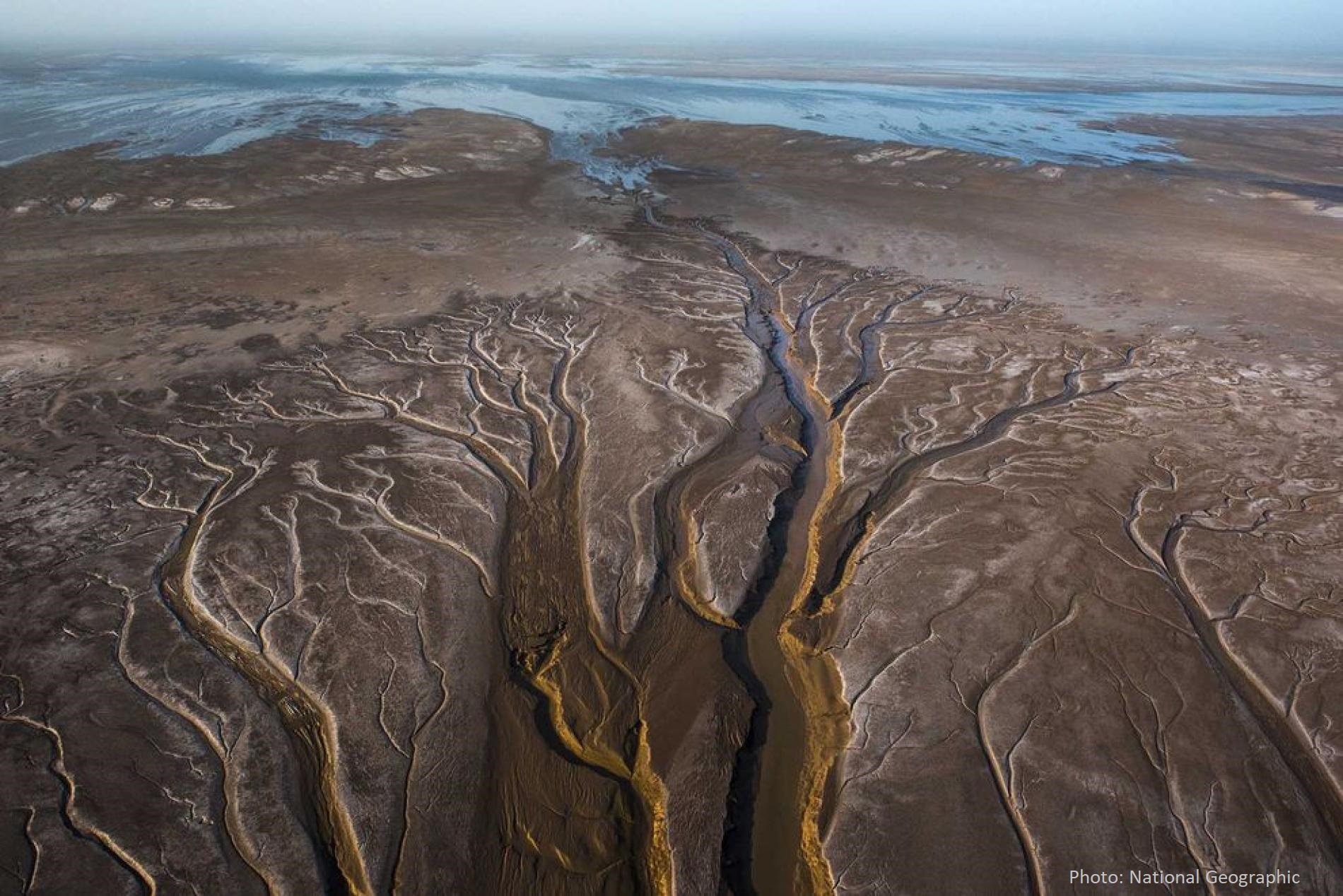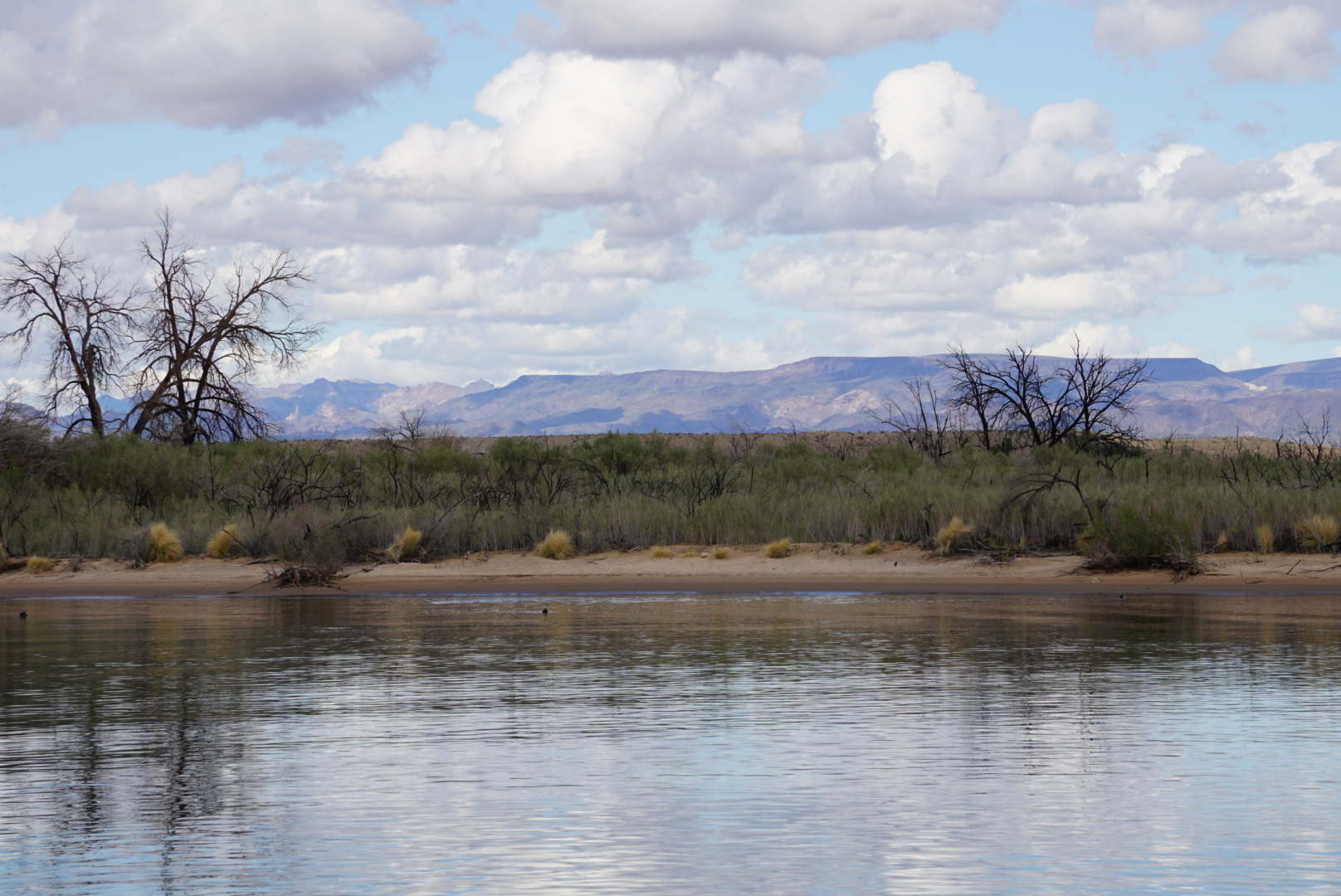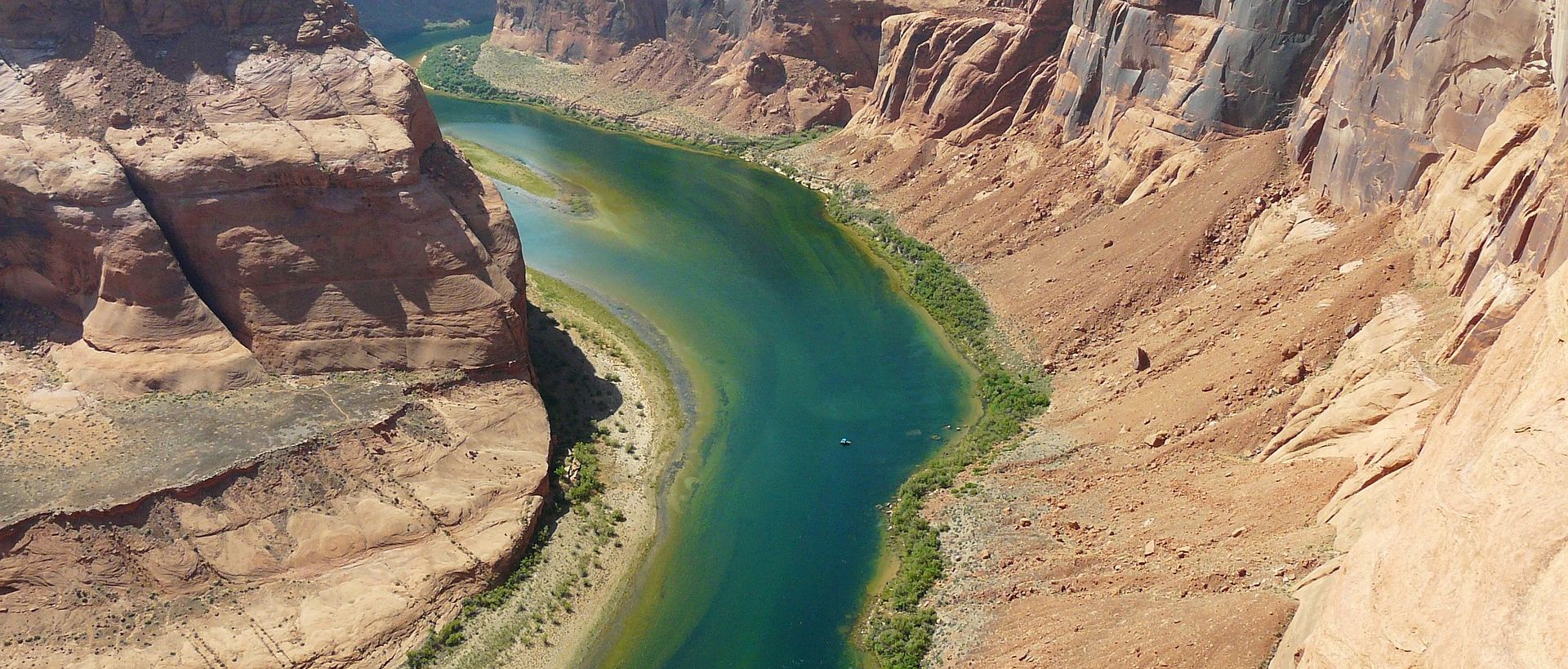By Cora Kammeyer
The Colorado River Basin is the lifeblood of the West, providing water to more than 40 million people in seven U.S. states and two states in Mexico. Irrigation using Colorado River water generates an estimated $8 billion annually in agricultural products like winter vegetables, cotton, and cattle and dairy. In addition, recreation along the river and its tributary streams (boating, swimming, hiking, camping, etc.) contributes $17 billion per year to local economies. All in all, the Colorado River supports $1.4 trillion in annual economic activity and 16 million jobs across the western U.S., according to a recent study done by The Nature Conservancy.
The Colorado River supports $1.4 trillion in annual economic activity and 16 million jobs across the western U.S.
Yet, the Colorado River Basin faces many water challenges that threaten its economic—and social and ecological—vitality. The river used to run more than 1,400 miles from its headwaters high in the Rocky Mountains down to the Gulf of California, but now—overallocated and fully depleted—the river disappears into its sandy bed 80 miles upstream of the ocean. The Colorado River Basin has been in a severe extended drought for 20 years. Climate change is increasing evaporation rates and water demand, diminishing snowpack, and is projected to reduce river flows by twenty percent by mid-century, worsening pressures on the already-water-stressed river basin.

The Colorado River used to run more than 1,400 miles from its headwaters high in the Rocky Mountains down to the Gulf of California, but now it disappears into its sandy bed 80 miles upstream of the ocean.
Despite extended drought and shrinking water supplies, Colorado River Lower Basin states and Mexico (Arizona, Baja California, California, Nevada, and Sonora) had been able to avoid water shortages by depleting reservoir storage – until this year, when reductions kicked in for all but California. And while renegotiation of the Colorado River interim guidelines will begin this year, the reliability of Colorado River water supplies remains highly uncertain.
In the face of these challenges, in March 2020 Pacific Institute researchers wrote a report that explores the role of the private sector in advancing water security in the Colorado River Basin. This report, “Scaling Corporate Water Stewardship to Address Water Challenges in the Colorado River Basin,” examines a set of key corporate water stewardship actions and activities, with associated drivers and barriers, to identify how the private sector could help tackle Colorado River water challenges.

Much of the water-dependent economic activity in the Colorado River Basin supports the operations and value chains of global corporations—from agricultural suppliers, to data centers, urban office and retail space, manufacturing, customer end-uses, and more. These corporations have both a business incentive and stewardship responsibility to contribute to water solutions for the region.
Much of the water-dependent economic activity in the Colorado River Basin supports the operations and value chains of global corporations—from agricultural suppliers, to data centers, urban office and retail space, manufacturing, customer end-uses, and more.
Our report found that corporate water stewardship in the Colorado River Basin is still relatively nascent, with much room for growth. Two key strategies for advancing the maturity and reach of corporate water stewardship in the Colorado River Basin are to:
- Expand water stewardship education, decision-making data, and starter tools about the value of water stewardship; and
- Facilitate local collaboration on water stewardship.
By educating companies on how water stewardship can play a role in both achieving their own corporate goals and contributing to solving shared water challenges, we can increase the number of companies that embrace corporate water stewardship and encourage them to make positive contributions towards sustainable water management for the Basin. This means investments in the tools and resource necessary to support informed and robust decision-making on water. We also know that the success of water stewardship activities, especially when looking beyond a company’s direct operations, depends on partnerships and collaboration. Scaling water stewardship practices at the local level will often require the help of third parties to facilitate relationship-building between companies and other stakeholders, who may not typically work together on shared water challenges.
Currently, the existing pool of companies practicing robust water stewardship in the Colorado River Basin is small, and the scale of their collective activities is nowhere near commensurate to the magnitude of water challenges they face. But their activities, if scaled, have great potential for positive impact, particularly with increased investments in water stewardship education, improved decision-making data, relevant tools, and facilitated local collaboration.
Read the report here.
Learn more about the Pacific Institute’s work on the Colorado River here.



The Lower Colorado River states need to get serious about water management and Conservative. They have overdevelopmented and over irrigated for years taking out more than their allotted share of water. The Upper Colorado River Compact states are now going to start withholding their full allotment of water. Wyoming is only using half of their annual water allotment. They will now start withholding their full share with 5 new or expanded dams that will be developed!! This will force the Lower Colorado River Compact states to get serious about water conservation!!